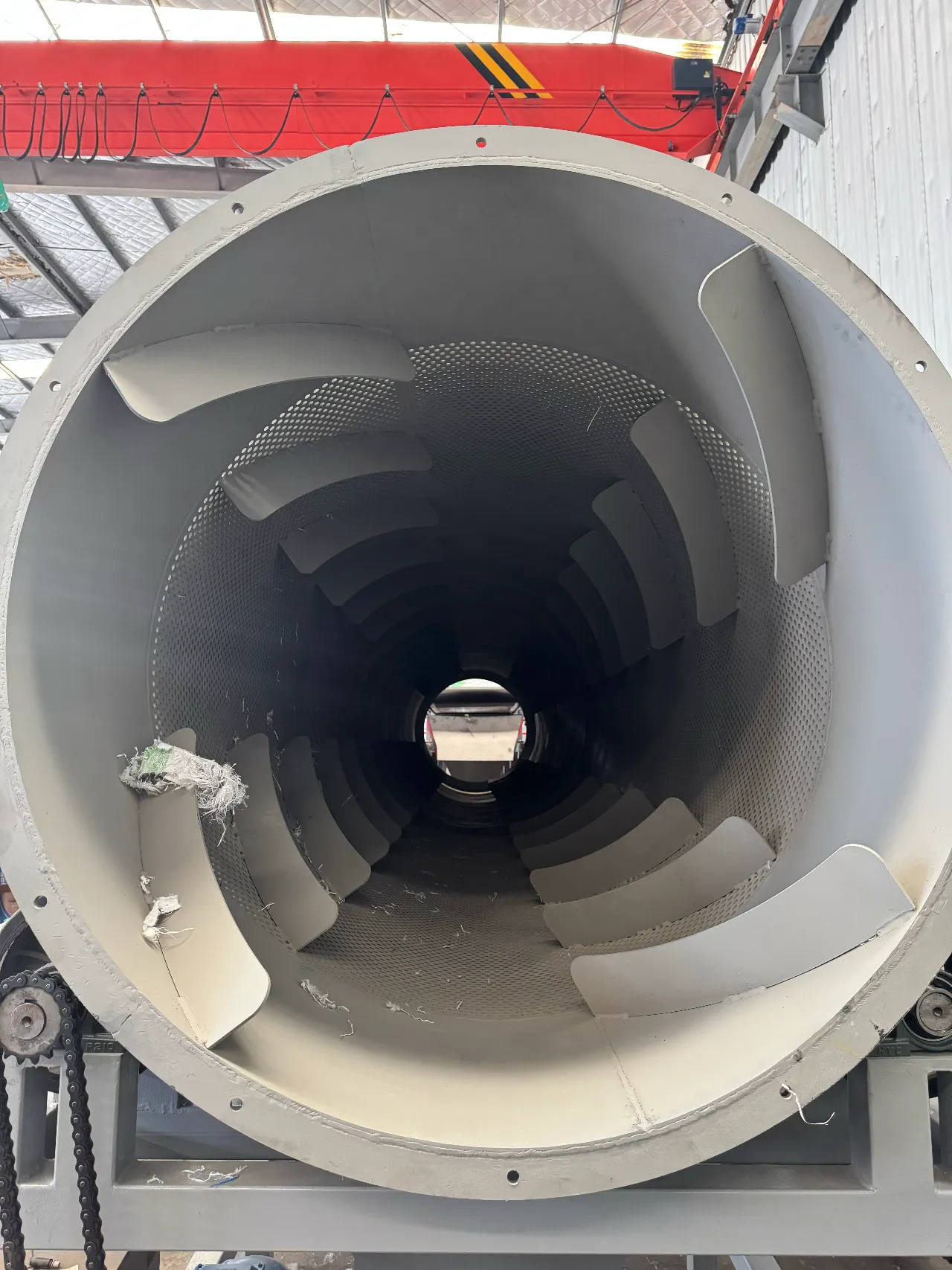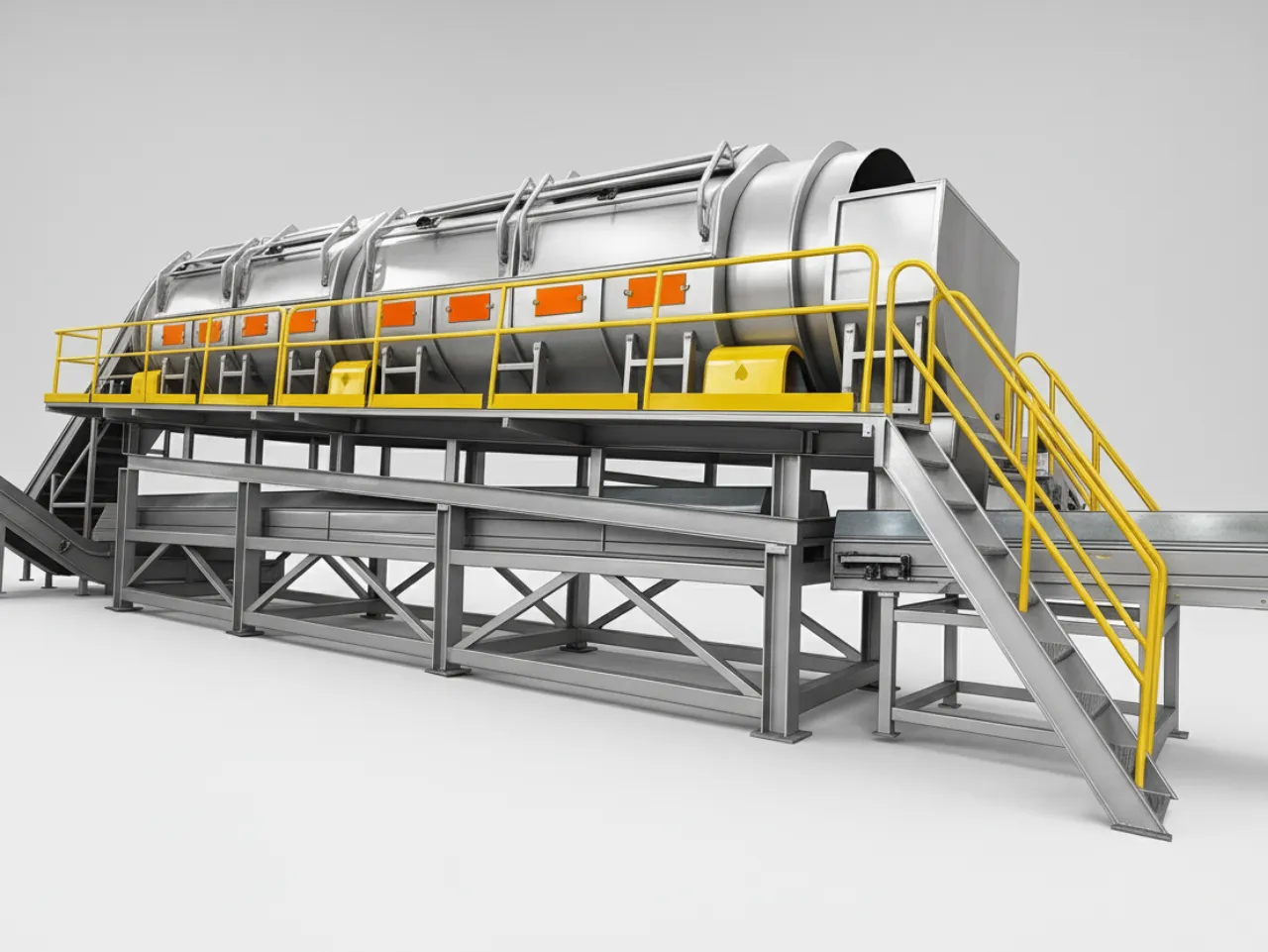Efficient Trommel Screens for Recycling & Material Separation
Robust, high-throughput rotary screens designed to classify bulk materials like compost, C&D waste, MSW, and aggregates with unparalleled precision.

The Trommel Screen Advantage
Our trommel screens deliver unmatched reliability and versatility, ensuring cleaner material streams, higher recovery rates, and maximum operational uptime.
High Throughput & Efficiency
Engineered to process large volumes of material continuously, maximizing your output and reducing bottlenecks in your processing line.
Versatile Application
Easily adapts to a wide range of wet or dry materials, from fine compost to bulky construction debris, with customizable screen options.
Robust & Low Maintenance
Built with heavy-duty materials and a simple, effective design. This translates to less downtime, lower operating costs, and a longer service life.
The Screening Process: Simple & Effective
The magic of the trommel lies in its straightforward and reliable mechanical process, ensuring consistent separation with every rotation.
Infeed
Material is loaded into the elevated end of the drum via a hopper or conveyor belt.
Rotation & Tumbling
The drum rotates at a controlled speed, lifting and tumbling the material to facilitate separation.
Size Separation
Smaller particles (“fines”) fall through the screen perforations onto a collection conveyor below.
Discharge
Larger materials (“oversize”) travel the full length of the drum and exit at the opposite end.
Applications Across Industries
From organic compost to industrial waste, trommel screens are the workhorse of choice for a diverse range of material classification tasks.
Compost & Topsoil
Produces high-quality, uniform soil products by removing stones, roots, and other debris. Essential for landscaping and agricultural applications.
Municipal Solid Waste (MSW)
A critical component in MRFs for separating organic fines and breaking bags, improving the efficiency of downstream sorting processes.
C&D Waste
Effectively separates soil, aggregates, wood, and metals from construction and demolition debris, maximizing material recovery for recycling.
Technical Specifications
| Processing Capacity | 50–300 m³/h (Varies by model & material) |
|---|---|
| Drum Diameter | 1,500 mm to 3,000 mm |
| Drum Length | 4,000 mm to 12,000 mm |
| Screen Aperture | Customizable (10 mm – 150 mm) |
| Drive System | Chain, gear, or friction wheel drive |
| Motor Power | 11 kW – 45 kW with VFD control |
| Inclination Angle | 3–7 degrees (Adjustable) |
| Control System | Centralized PLC with HMI touchscreen |
Frequently Asked Questions
What is the difference between a trommel and a vibrating screen?
Trommel screens use a rotating drum to tumble and separate materials, making them ideal for bulky, wet, or mixed waste like MSW and compost. Vibrating screens use high-frequency vibration and are better suited for grading dry, granular materials like sand and gravel.
How do I choose the right screen size (aperture)?
The ideal screen aperture depends on your input material and desired output product. Our engineers will help you select the perfect size based on a material analysis and your operational goals. We offer easily interchangeable screen panels for maximum flexibility.
Can your trommels handle wet and sticky materials?
Absolutely. Trommels excel with these materials. We also offer an optional heavy-duty nylon brush system that automatically cleans the screen as it rotates, preventing clogging (blinding) and maintaining consistent screening efficiency.
Request a Custom Quote
Provide details on your material, required capacity, and site conditions. Our engineers will configure the perfect trommel screen for your operation and provide a detailed proposal.



